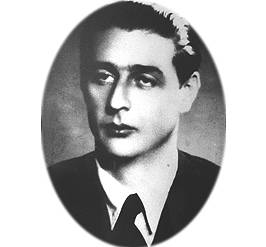
Due to his belief in the nationalist ideas of Gabriele D’Annunzio, Giorgio Perlasca joined up to fight on the side of Francisco Franco in the Spanish Civil War. At the end of that conflict, he returned to Italy, where the start of the Second World War and the alliance between Mussolini and Hitler took him by surprise. It was at this time that he abandoned his former belief in fascism and decided that from then on he would be loyal only to King Victor Emmanuel III. Old, deep seated resentment towards Germany, against whom Italy had fought in the First World War, and the new German racial laws of 1935 severely tested his ardent patriotism. ”I was neither fascist nor anti-fascist; I was anti-Nazi,” he would say much later.
The fall of 1943 marked his surprise appointment as an official representative of the Italian government with diplomatic status in Budapest. He was sent as an emissary to the countries of Eastern Europe, charged with the mission of purchasing meat for the Italian army. On the 8th of November, American General Dwight Eisenhower announced the unconditional surrender of Italy to the Allied forces. The Hungarian government, threatened by Germany, took Perlasca prisoner and sent him to a castle reserved for diplomats. After months of captivity, he took advantage of a medical pass that he had been issued permitting him to travel inside of Budapest and sought refuge in the Spanish Embassy, the scene of his earlier adventures, in hopes of obtaining asylum. Immediately Giorgio became known as ”Jorge”, and was granted the same rights enjoyed by all Spanish citizens.
Very soon afterward he began to contribute to the efforts that Angel Sanz Briz, head of the Spanish mission in Budapest, was making in collaboration with representatives of other diplomatic delegations like Switzerland, Sweden, Portugal and the Vatican to rescue Jews in Budapest. When it became necessary for Sanz Briz to flee Hungary at the end of 1944 because of his refusal to recognize the new pro-Nazi government of Ferenc Szalasi, the Hungarian authorities took the opportunity to attempt to take over the houses of Spanish citizens, in which many Jews were hiding. Acting with great haste because he feared the worst, Perlasca managed to convince the Hungarian Minister of the Interior that Sanz Briz had appointed him as his successor.
Perlasca, with the help of a forged document on official letterhead confirming his appointment as a representative of Franco’s government, named himself Spanish Ambassador. He gave the document to the Hungarian Foreign Ministry, which accepted it without reservation or comment. Acting immediately, he officially placed the thousands of refugees who had been taken in by Spanish citizens under his protection and, just like Raoul Wallenberg, managed to remove a large number of them from the lists of those who were condemned to death and scheduled to be placed in concentration camps.
”The relatives of all Spaniards in Hungary require their presence in Spain. Until we are able to reestablish communications and the journey back is possible, they will remain here under the protection of the government of Spain” read the letters of protection, based on a 1924 law, that Perlasca used to bestow Spanish citizenship on all Sephardic Jews. With the arrival of the Soviet Red Army in Budapest and the certainty that around 5200 Jews had been saved, Perlasca returned to Italy.
Translation: Stephen Smith
